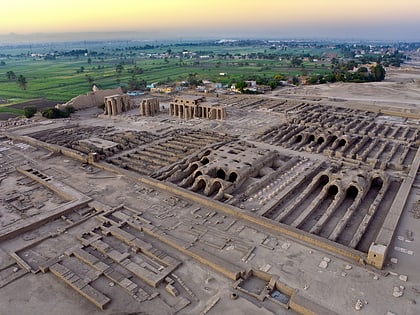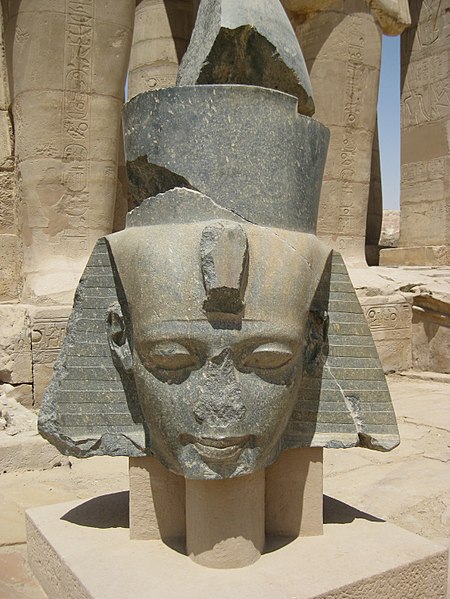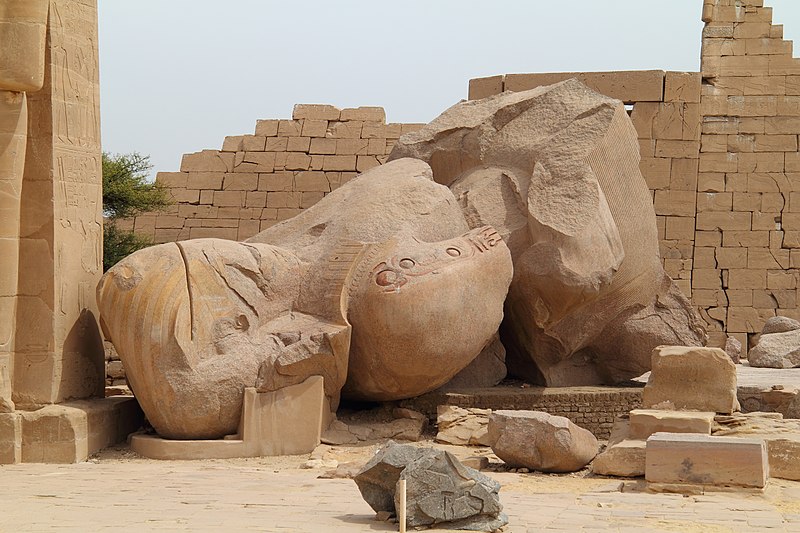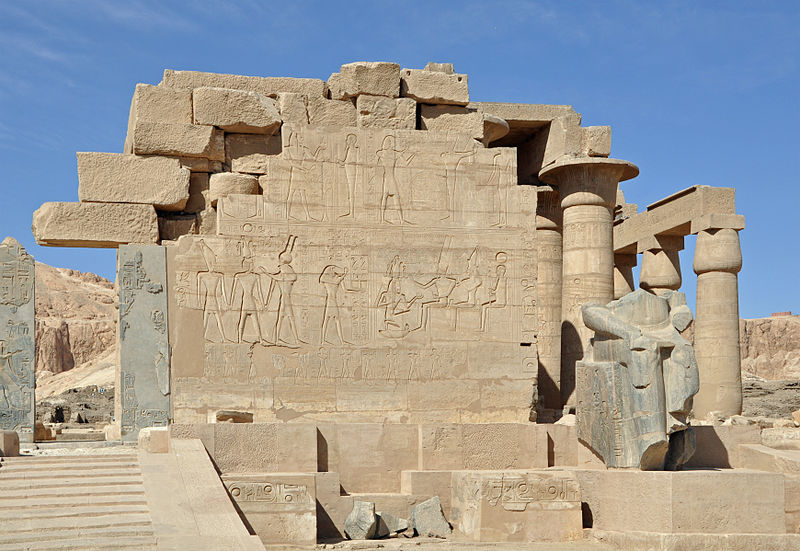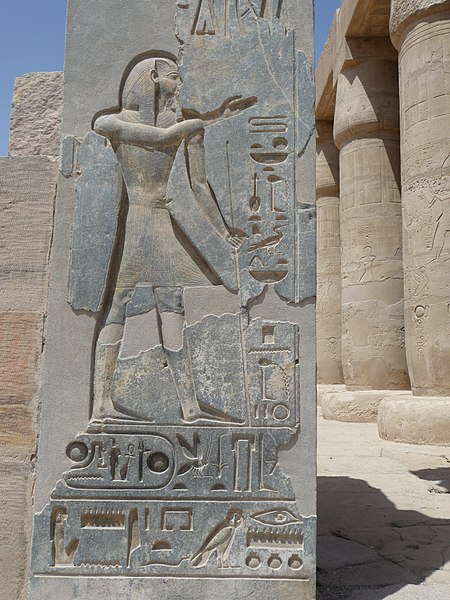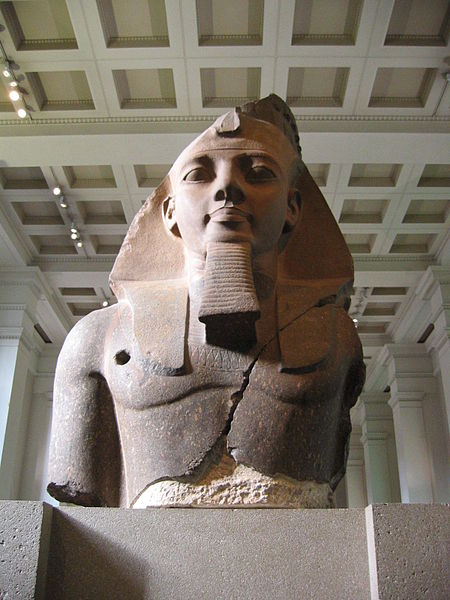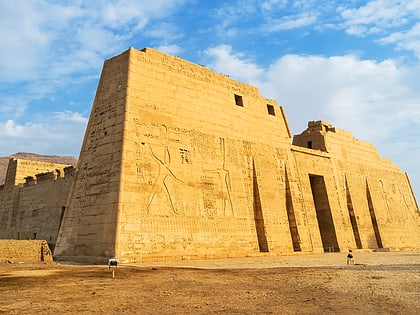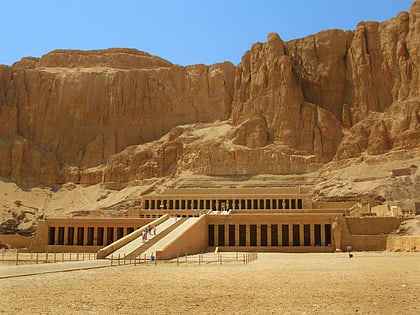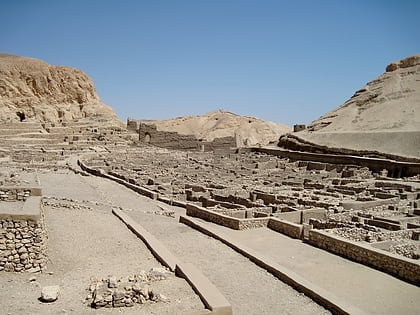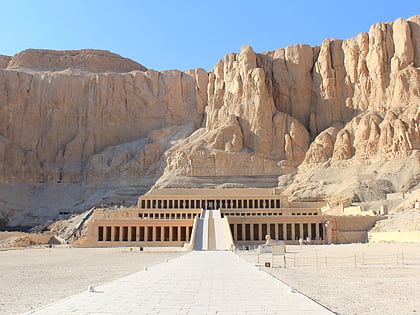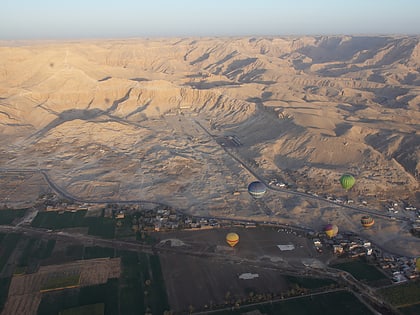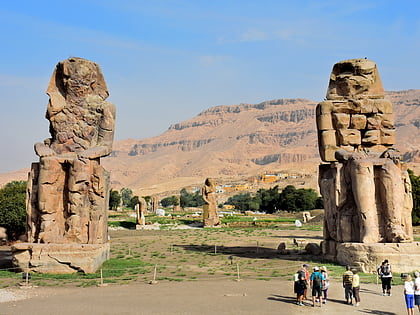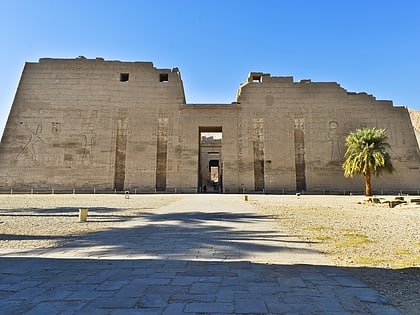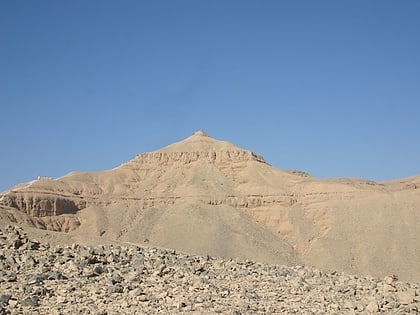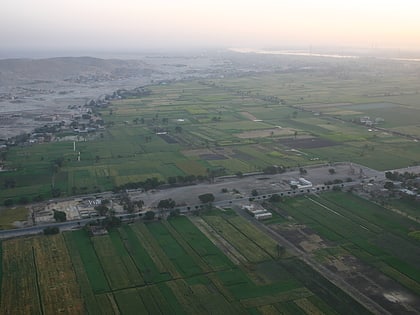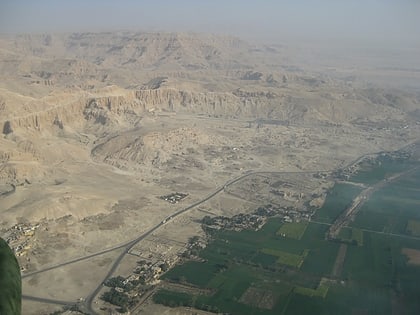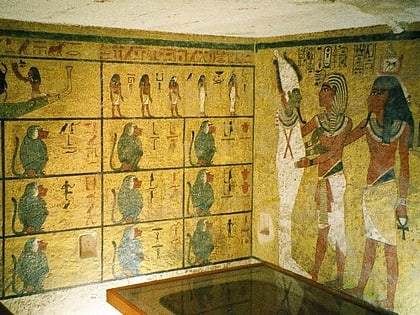Ramesseum, Luxor
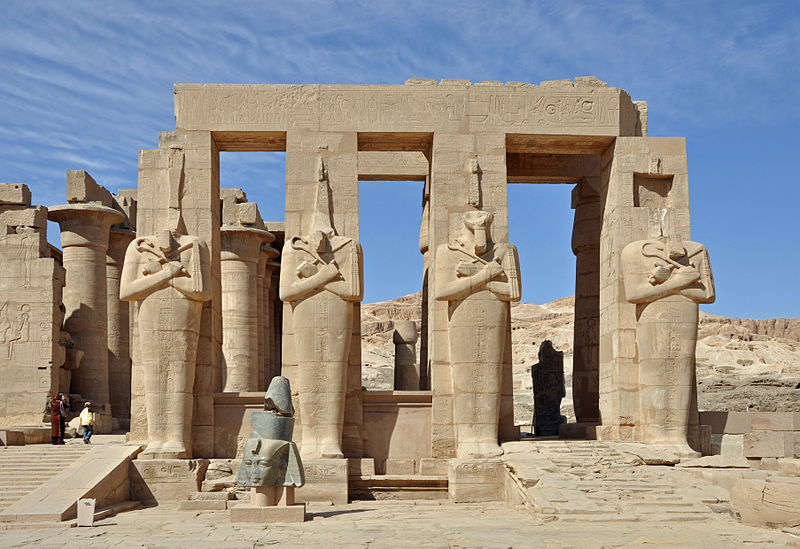
Facts and practical information
Nestled in the ancient city of Luxor, the Ramesseum stands as an eloquent testament to Egypt's grandeur during the New Kingdom period. This mortuary temple, dedicated to Pharaoh Ramesses II, is not only a museum of monumental architecture but also a gateway to the past, offering a glimpse into the life and beliefs of a civilization that has long captivated the imagination of the world.
Constructed in the 13th century BCE, the Ramesseum was intended as a grand commemoration of Ramesses II's reign and a site for his cult worship after death. It is a part of the Theban Necropolis, which lies on the west bank of the Nile, opposite the vibrant city of Luxor, formerly known as Thebes.
Today, the Ramesseum invites visitors to walk through the remains of its colossal pylons, vast courtyards, and intricate wall reliefs that depict the pharaoh's military triumphs, including the famous Battle of Kadesh. The complex also housed a massive statue of the pharaoh, which, although now in ruins, still conveys the might and ambition of its subject.
Despite the ravages of time and the elements, the Ramesseum retains much of its grandeur. The site's highlights include the well-preserved astronomical ceiling, an array of statues and stelae, and an extensive library that once contained thousands of papyrus scrolls, underscoring the temple's role as a center of wisdom and learning.
Open to the public year-round, the Ramesseum offers a quieter, more contemplative experience compared to some of Luxor's more frequented attractions. As visitors walk through the temple's ancient corridors, they are enveloped in the history that permeates the stone and the stories that echo through the columns and ruins.
West BankLuxor
Ramesseum – popular in the area (distance from the attraction)
Nearby attractions include: Medinet Habu, Mortuary Temple of Hatshepsut, Deir el-Medina, Deir el-Bahari.
